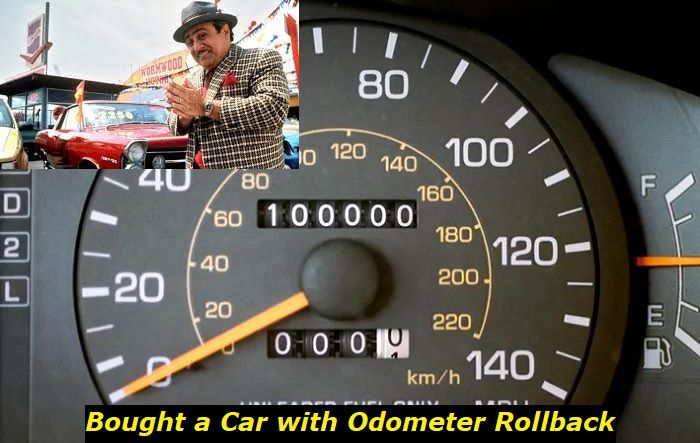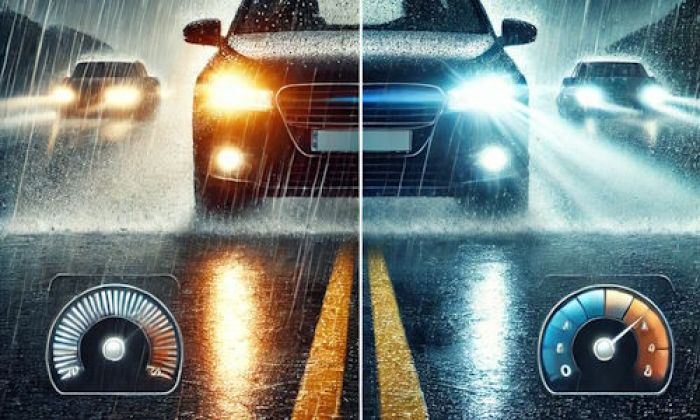If you are preparing for a long car trip, you should plan everything. It's especially important if this is your first long trip and you've never been driving more than 5 consequent hours. This may be challenging even for experienced drivers, so it's worth knowing what you should expect and how you can cope with common problems.
You can drive about 500 miles in 10 hours without torturing yourself. Experienced drivers who love driving can go up to 700 miles if they won't make a lot of stops. But you just shouldn't plan to drive for more than 9 hours in total during a day and make over 500 miles a day. This will allow you to keep your concentration level high and always react to any road conditions.
.jpg)
Here's what I will cover in this article:
- Safe plan for your long trip - what to consider?
- How many miles should you plan to drive?
- What are the best time frames for having a rest during your car trip?
- Dealing with sudden problems and conditions during your long trip.
Let's get started!
Making a safe plan for your long car trip
Before you set on a long car trip, you should obviously make a certain plan. Modern-day technologies help you get ready for any driving conditions. For example, you need to know what kind of weather you should expect on your way. Also, you need to consider any challenging road conditions. And this is the most important part of your preparation.
Personally, I love using different interactive maps before I go on a long trip on the road that I've never been to. This helps me study the route and even see the intersections that I need to take into account when driving. Also, this sometimes helps me build optimal routes and avoid going into the cities.
Here's what you should do to prepare for a long trip:
- see the weather forecast in several sources along the way of your route;
- prepare the needed equipment and make sure it's charged (now, you may only need your smartphone for all tasks);
- look at the map and build several different routes with Google Maps or a similar app and see how much time it takes to get to the needed point;
- if your route is much longer than 500 miles, plan a stop for a night and find a good motel or hotel to stay in;
- make sure your vehicle is good to go, it won't require an oil change in 500 miles and it has proper tires, etc.;
- make sure you have a full tank of fuel because gas stations may be surprisingly rare on some roads.
Now, this will help you get ready for the road. If you are going to drive a lot of miles in one day, it's always worth it to start as early as you can. Driving in the morning is cool - there is still no traffic in your city and suburbs, so you can faster get to the highway and start speeding up and relaxing getting that road trip vibe.
But don't forget that to feel good, you need to get ready for all road surprises. Check if you have the properly inflated spare tire and all the tools to install it like a jack and the lug nut wrench. Also, check if the engine fluids are all at the needed level and in good condition. Make sure there is nothing in your car that needs to be addressed like bad brake pads or some warning light flashing on the dash.
How many miles should you plan to drive for 10 hours
Let's imagine you've decided that you will be driving for 10 hours. Actually, this is a bad idea, and you better plan to drive 8-9 hours excluding stops. This is a general recommendation to drive a maximum of 9 hours a day to keep the concentration level high enough for safe driving. Anyways, how many miles can you drive at this time?
If you are an inexperienced driver, you may count that the allowed speed on the highway is, say, 70 MPH and you will be driving for 10 hours, so it's 700 miles. But things don't work that way. The average speed, even during highway driving, is usually much lower than the maximum allowed speed.
So, here's how it should be counted:
- the maximum recommended driving distance for a day for a driver is 500 miles;
- you shouldn't cover more than that if you don't have enough experience;
- after you drive 500 miles a day, your concentration level drops and the risk of getting into trouble gets much higher;
- also, you shouldn't drive more than 100 miles without stops;
- for every 4-5 hours of driving, you should have about 45 minutes of rest;
- whenever you feel that you are tired, you should stop and walk a little in the fresh air;
- whenever you feel that you can't drive anymore, stop and find the nearest place you can stay in.
If you are driving long distances for the first time in your life, it would be great to have another person with a driving license with you in the car. If you feel unable to drive, this person can help you. Also, if you need to drive more than 500 miles, you can ask this person to keep on driving when you are tired and you can make more miles during the day.
Also, the proper distance of driving during 10 hours should be planned according to the road conditions. If you drive on a highway only, 500 miles for 10 hours is OK. But if you need to go through the cities and small roads with only two lanes on them, you will not be able to drive with the average speed of 50 MPH and you shouldn't plan to drive 500 miles a day, in this case.
Planning your rest points on the route
I really like to plan my stops on the route because this way I can stop at a certain gas station that has all the needed features like good coffee, clean toilets, some chocolates and Coke on sale, etc. Or I can choose to stop in a small town that has a good big McDonald's or some other fast-food restaurant that I want to attend.
If I don't plan my stops and my wife suddenly says she needs to have a rest within the nearest 15 minutes, I need to stop at any appropriate place that at least has a toilet. And this brings me much less joy than a good McDonald's restaurant or just a big gas station with cool additional features.
That's why, you should plan everything according to these recommendations:
- build the map of your route in Google Maps or in another app that you are using;
- put the points on the map with good places to have a rest in;
- count about 80-120 miles between each stopping point and delete other points;
- make sure you can drive between these stopping points for 2-3 hours;
- plan your stops every 2-3 hours to keep the concentration high enough;
- don't plan to drive over 200 miles without a stop;
- maybe plan to quickly visit a cool and beautiful place with some great views or another place of interest.
Such planning will most obviously help you get the most out of your car trip. If I need to go to the place I often drive to, I try to choose different routes to see more of the country and to have more fun. Also, I try to find some great places to visit and have a rest. This helps me usually make my long car trips pleasant and memorable.
There are hundreds of hidden gems all around the roads in the US and in any other county, so just use them. But in some countries, you should also learn more about road conditions. This may highly affect your average speed and the pleasure of driving.
How can you deal with unexpected problems on your way?
When you are going to drive more than 500 miles, you need to be ready to solve some problems that may show up on the way. They don't always happen but if they happen, you are usually lost.
To avoid or quickly solve these problems, I highly recommend preparing the following:
- spare wheel ready to use with the needed set of tools - extremely important;
- a canister and funnel that you will use in case you run out of fuel in the middle of nowhere;
- if it's winter, you need to have warm clothes and shoes in your trunk, just in case;
- get phone numbers of several roadside assistance services and tow truck companies in different areas on your route;
- get phone numbers of dealers that represent your car manufacturer and are located along your route - they may help, especially if the car is still under warranty.
You won't be able to prepare for absolutely any possible road problem. In many cases, you will need to improvise to solve the issue. But if you have at least someone to call, you may be saved.
Also, have a good sleep before you start your trip and try to concentrate completely on the road conditions. Of course, good music and talking to a friend that seats near you will help you make the trip much more pleasant.
About the authors
The CarAraC research team is composed of seasoned auto mechanics and automotive industry professionals, including individuals with advanced degrees and certifications in their field. Our team members boast prestigious credentials, reflecting their extensive knowledge and skills. These qualifications include: IMI: Institute of the Motor Industry, ASE-Certified Master Automobile Technicians; Coventry University, Graduate of MA in Automotive Journalism; Politecnico di Torino, Italy, MS Automotive Engineering; Ss. Cyril and Methodius University in Skopje, Mechanical University in Skopje; TOC Automotive College; DHA Suffa University, Department of Mechanical Engineering






Add comment